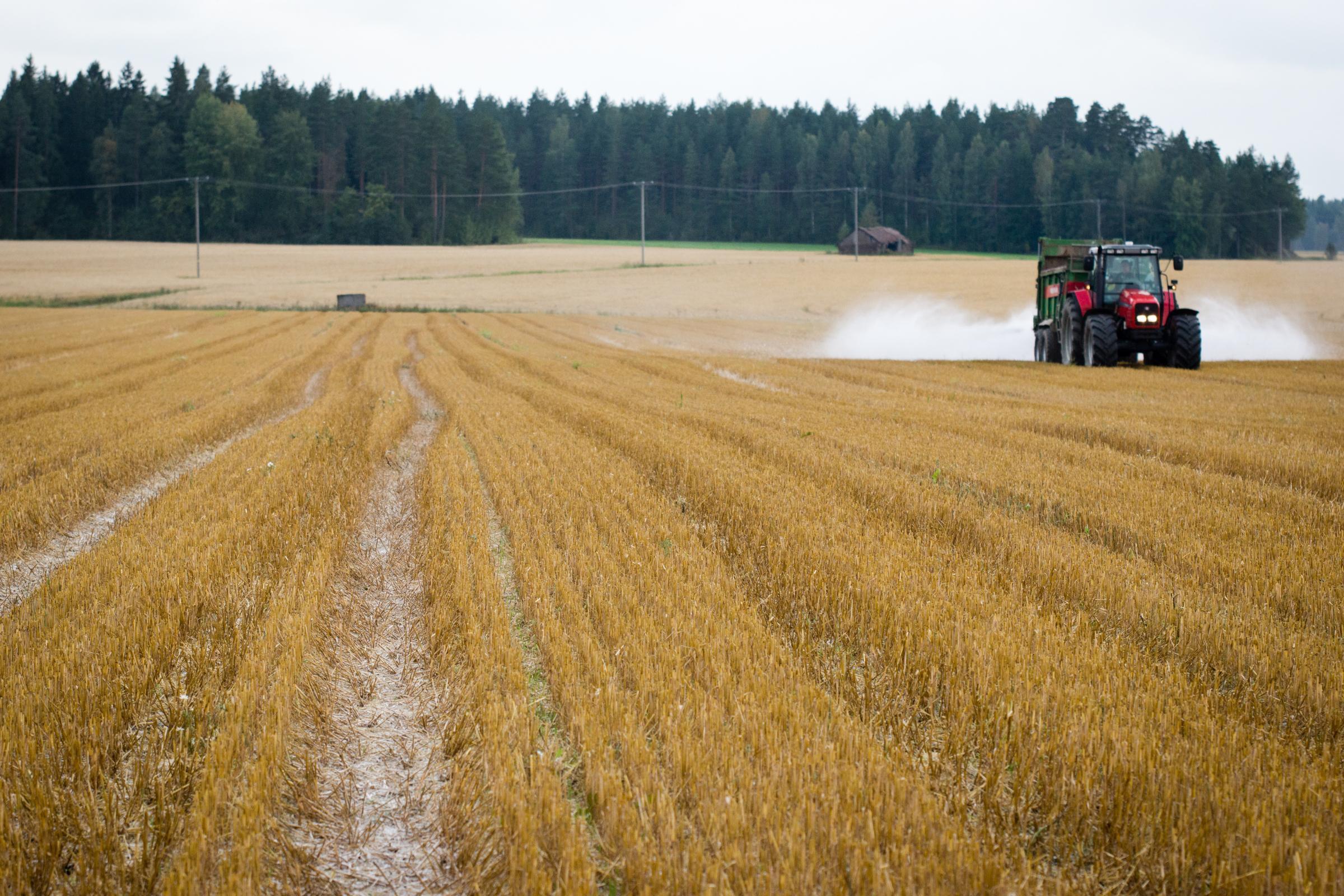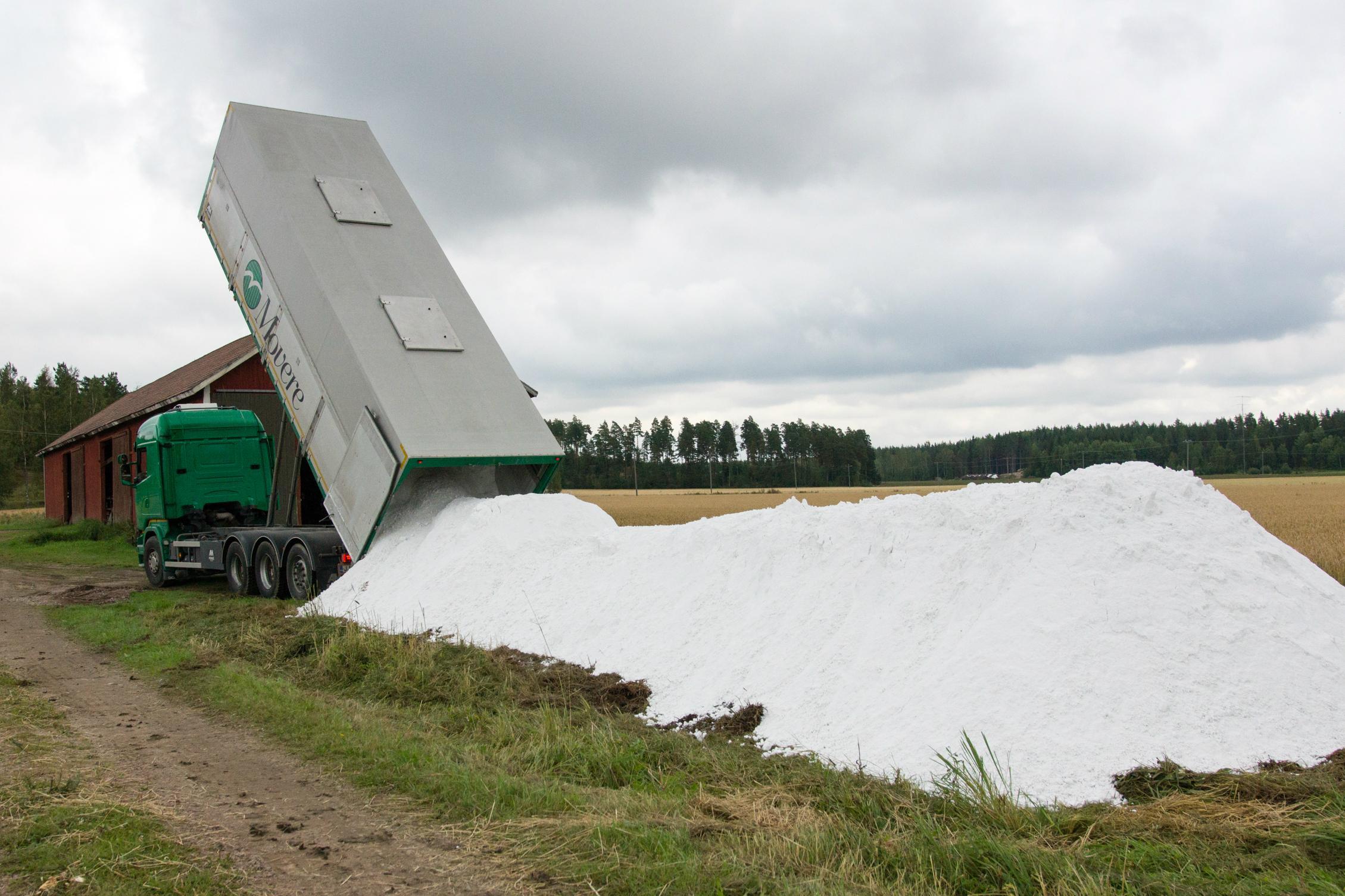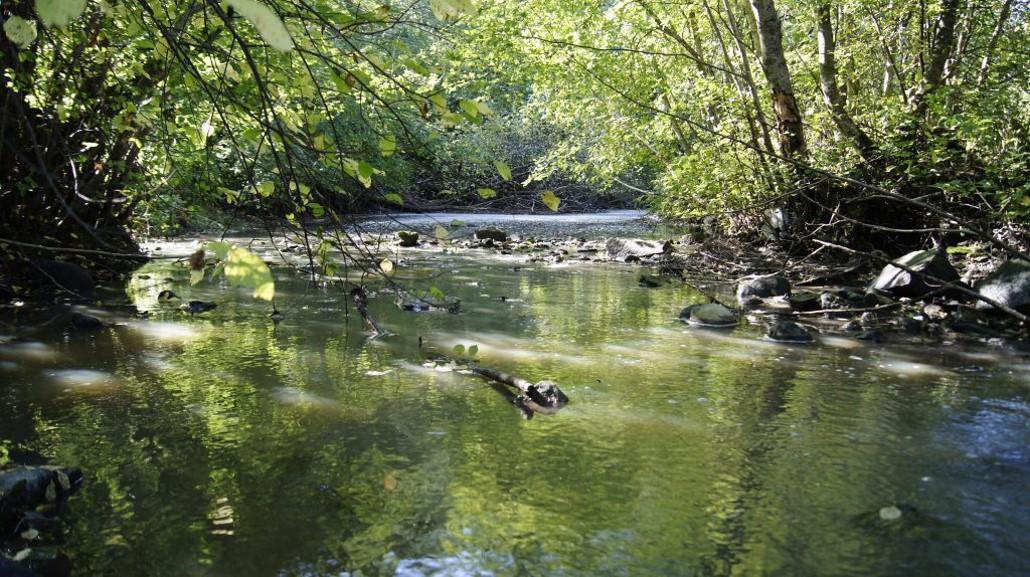By Eliisa Punttila and Samuli Puroila, University of Helsinki
Last autumn a large-scale pilot took place in southwestern Finland testing a promising water protection method: gypsum application of agricultural fields. The impacts are now being monitored and initial results are already in.

Gypsum spreading on agricultural fields were piloted last autumn in a large area in Southwest Finland in order to reduce phosphorus loading from fields. Photo: Janne Artell
What is Pilot Gypsum?
Pilot Gypsum examines the viability of a new, promising water protection measure. Gypsum has the potential to significantly lower the phosphorus loading originating from agriculture and ending up in the Baltic Sea. With four tonnes per hectare, gypsum improves the soil structure enabling phosphorus to remain in the soil, thus reducing the nutrient run-off and improving the quality of run-off water.
The method is easy for farmers to apply, since gypsum can be spread using the same machinery as lime or manure. As a water protection measure it is quick and effective. Earlier studies suggest that gypsum can reduce the phosphorus load by half without requiring changes in farming practices or a decrease in cultivation area or yields. Gypsum application to fields is more cost-efficient at reducing phosphorus loading than any other water protection method currently in use in agriculture.
In Pilot Gypsum the emphasis in not only on the effectiveness of the method but also on the practicalities. While confirming the positive effects on water quality, the logistical, economical, and other practical questions surrounding the method are carefully reviewed to pave way for the large scale introduction of gypsum application.
The pilot takes place in Southwest Finland, where river Savijoki and a part of its catchment area act as the centre stage to the project. 6 200 tonnes of gypsum were spread on 1 550 hectares of field last autumn, and the effects of this operation are monitored both at the river and the fields.
Lessons learned
Organising a pilot of this calibre required careful coordination. First, the farmers needed to be persuaded into participating in the pilot. After contacting all farmers at the pilot area by mail and phone and organizing an event to discuss about the project, altogether 55 farmers decided to take part. With these 55 farmers, an area of 1 550 hectares of agricultural fields faced gypsum application.
After securing the farmers’ participation, it was time to turn the attention to the logistics.1 550 hectares of fields, with 4 tonnes each, totalled 6 200 tonnes of gypsum that had to be transported from Yara’s factory in Siilinjärvi, East Finland for more than 450 km to our pilot area. This amount required in total 144 trucks. Other forms of transportation were also considered but they were not competitive for this project.
The challenge was not only the amount of gypsum but the timing of delivery as well. Gypsum is spread between harvest and cultivation so the window of opportunity is rather small and, naturally, dependent on the weather. Storing large piles of gypsum for a longer period of time can also be tricky. Nevertheless, the transport went extremely well, and so did the spreading of gypsum. The weather last autumn was favourable for the procedure and there was a sufficient number of contractors available to carry it out. Gypsum was spread quickly after delivery and no need for storing emerged.
The gypsum effect
The main purpose of spreading gypsum is water protection. The effect gypsum has on water quality is measured at river Savijoki by the Finnish Environment Institute (as a part of project SAVE, co-financed by the Finnish Ministry of Environment). Multiple water quality indicators – such as conductivity and water turbidity – are monitored continuously for a minimum of three years. Continuous monitoring is complemented with manual sampling.
So far the results have been quite promising. During heavy rainfalls river water in the pilot area has been both visibly and statistically clearer than in a reference area. Water turbidity correlates strongly with phosphorus content, so the clearer the water the better.
On the other hand, it is vital to make sure gypsum does not have any unwanted effects. Though the science-based assumption is that gypsum has no negative impacts on soil or aquatic biota, all necessary actions are taken to make sure this really is the case. The results this far have been encouraging, and nothing that would threaten the method has come up.
What’s next?
From the coordinator’s perspective, the operational phase of our pilot was a success. The farmers’ perspective is currently under review: a questionnaire regarding the experiences of the pilot was compiled last autumn and sent to the participants. The answers will be carefully analysed and the results will be published later.
The same goes with water quality results. As time goes by, more and more data about the effects of gypsum are gathered, and a stronger analysis on the effectiveness of the gypsum method can be made. With the initial results being as promising as they are, it is really exciting to see how the actual results will turn out to be.


